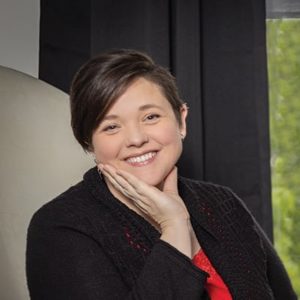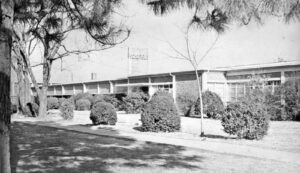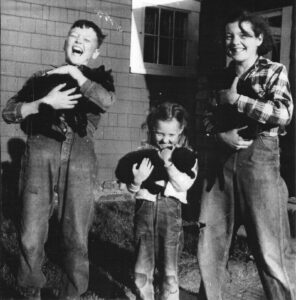Dr. Pierre Gaultier Jenkins’ letters home during the first wave of the 1918 influenza pandemic
Saturday A.M. “Still in bed.”
Dearest Father: I guess mother has rec’d my Special Delivery by now telling you all of my having the Spanish Influenza. Well I still have it and don’t feel much better to-day but don’t think it is of a very serious nature, at any rate it surely has knocked me out completely and am sore all over. There are about nine down with it now. Excerpt from Pierre Jenkins’ letter to his father, September 28, 1918.In 1918 my great grandfather, Pierre G. Jenkins, sixth of seven children, was not quite 18 years old. He had already resisted family pressure to attend The Citadel military college in his home town of Charleston, South Carolina. Somewhat undecided about his future, but considering careers in medicine or religion, he chose the Presbyterian sponsored Davidson College in the town of the same name in North Carolina. In September of 1918, there were several world changing events converging on the small North Carolina town. World War I had not yet reached Armistice Day, and colleges around the country became sites for the Student Army Training Corps, known as the SATC. Davidson College became a part of this program, where students would drill and train to be soldiers. The SATC had not yet been established at Davidson when Pierre had decided to attend, but was forming by the time he arrived. Since he was still 17, he would not have been required to join the SATC until the following semester. It wasn’t long before homesickness started to catch up with him in North Carolina, but by the end of his first month at Davidson, Pierre was suffering from a different kind of sickness as well. Known then as the Spanish Influenza, La Grippe, or the more colorful Spanish Lady, an avian borne H1N1 virus was on its first wave through the United States. The Spanish Influenza pandemic of 1918 was the last time the country saw anything close to the scale of today’s COVID-19 pandemic. An estimated one third of the world’s population became infected, and across the United States, an estimated 675,000 died. My Nana, Emily Jenkins Hindman, recalls the stories her father told her of the time “Daddy said it was terrible. They had run out of beds for the students so they had to lay them out on desks.” At first the sick students were isolated to one floor of a dormitory, but as more became sick, eventually all four floors of that dorm were designated as sick beds. Eventually about 150 Davidson students became sick. Rose Stevenson, a nursing student sent from Charlotte, North Carolina, to Davidson College to assist, caught the disease herself and died upon returning home, within days of her expected graduation date in October of 1918. Despite having a relatively mild case, Pierre was still confined to bed, which gave him time to think about his future. As the almost youngest of so many children, 5 boys among them, he wasn’t necessarily expected to join his father’s manufacturing business, as some of his brothers already had. In the early 1900s being a physician was not necessarily a parent’s first wish for his child’s future career. Doctors were often paid in trade or not at all. Pierre had finally made up his mind. “As Mother said in her letter, as I am a man I must decide things for myself. I am not at all satisfied up here.” Pierre recounts the long talks he had recently had with the college president, Dr. William Joseph Martin, Jr. Dr. Martin’s recommended that he take as many medically related classes as possible “for the war effort,” and he changed his course load to follow the Bachelor of Science track. While the medical courses interested him, this meant he would have to drop his Bible class, which he loved. Without this change, he would have had to join the SATC after turning 18 the following semester. If he then declined to join the SATC, he would have had to move into the oldest dormitory on campus, which lacked running water, only had open fireplaces for heat, and according to his letter was “filthy dirty.” The idea of fetching his own firewood while trying to study was not at all appealing. Faced with these unsatisfactory choices, Pierre came to the conclusion that he did not want to continue at Davidson at all, but rather wanted to return to his beloved home town and attend the Charleston College (now College of Charleston) with the goal of becoming a physician. He requests in his letter that his parents withdraw him immediately from Davidson and, with obvious obstinacy in his tone, says that he would no longer be asking Dr. Martin’s advice “as he doesn’t help me much, and tells me the same thing every time.” The War, the Spanish Flu, and a terrible case of homesickness gave Charleston its leading ophthalmologist of his time. After leaving his uncertain, unhappy, freshman semester at Davidson, Pierre stayed the course in Charleston. He went on to become Dr. Pierre Jenkins, MD, professor of ophthalmology and chair of the department at the Medical University of South Carolina, chief of staff for Roper Hospital; he earned many other titles and accolades as well. Later he was instrumental in founding the Storm Eye Institute at MUSC, and upon his retirement in the late 1970s was among the oldest living eye surgeons in Charleston.






